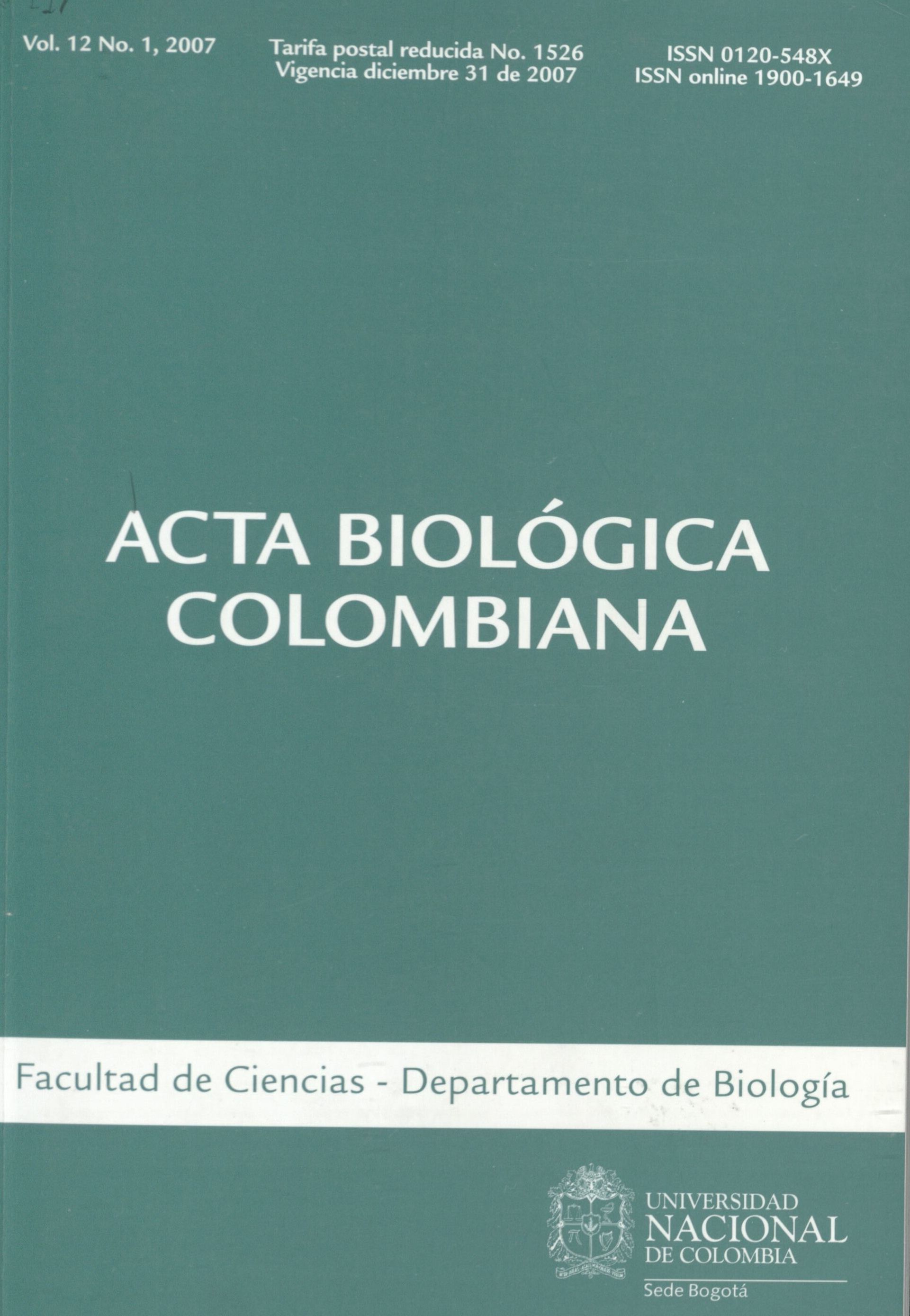Diversidad de abejas (Hymenoptera: Apoidea) en estados sucesionales del bosque húmedo tropical
Bee Diversity (Hymenoptera: Apoidea) in a Tropical Rainforest Succession
Palabras clave:
Apoidea, Sucesión, Inventarios, Colombia (es)Apoidea, Succession, Surveys, Colombia (en)
Descargas
15.356 specimens were collected, belonging to four families and 287 species, representing 62% of all bee species found in Colombia. About 50% of all individuals sampled were stingless social bees (Apidae, Meliponini). Trigona (Trigona) fulviventris was the most abundant species (~10%) in the survey. Augochlora and Megachile were the most specious genera. The pasture and secondary forest showed high values of diversity and richness and were significantly higher than those of the mature forest and low shrubs. In all successional stages, except in the mature forest, the number of new species collected in each sample period approached zero and the species accumulation curves tended to stabilize as time and sampling area increased. The net was the most efficient method in all successional stages, except in the forest, where most bee species and individuals were collected with the Van Somer trap. However, a higher percentage (50%) of rare species was collected with the Malaise trap. The number of new species collected in each sampled period and the species accumulation curves suggest that our survey was nearly sufficient to estimate the bee diversity in these early successional stages, but insufficient to study the mature forest apifauna. Due to the high efficiency of the Van Somer trap to attract bees in the forest, this trap should be used regularly in additional bee surveys in tropical rain forests. We also summarize the bee surveys in Colombia and highlight the importance of using other less common sampling methods to study bees from tropical ecosystems.
Cómo citar
APA
ACM
ACS
ABNT
Chicago
Harvard
IEEE
MLA
Turabian
Vancouver
Descargar cita
Visitas a la página del resumen del artículo
Descargas
Licencia
Derechos de autor 2007 Acta Biológica Colombiana

Esta obra está bajo una licencia internacional Creative Commons Atribución 4.0.
1. La aceptación de manuscritos por parte de la revista implicará, además de su edición electrónica de acceso abierto bajo licencia Attribution-NonCommercial-ShareAlike 4.0 (CC BY NC SA), la inclusión y difusión del texto completo a través del repositorio institucional de la Universidad Nacional de Colombia y en todas aquellas bases de datos especializadas que el editor considere adecuadas para su indización con miras a incrementar la visibilidad de la revista.
2. Acta Biológica Colombiana permite a los autores archivar, descargar y compartir, la versión final publicada, así como las versiones pre-print y post-print incluyendo un encabezado con la referencia bibliográfica del articulo publicado.
3. Los autores/as podrán adoptar otros acuerdos de licencia no exclusiva de distribución de la versión de la obra publicada (p. ej.: depositarla en un archivo telemático institucional o publicarla en un volumen monográfico) siempre que se indique la publicación inicial en esta revista.
4. Se permite y recomienda a los autores/as difundir su obra a través de Internet (p. ej.: en archivos institucionales, en su página web o en redes sociales cientificas como Academia, Researchgate; Mendelay) lo cual puede producir intercambios interesantes y aumentar las citas de la obra publicada. (Véase El efecto del acceso abierto).





















